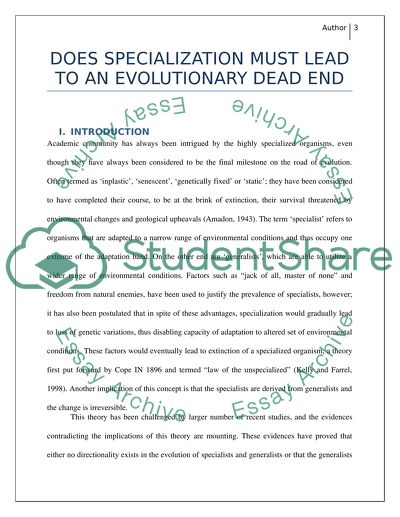Cite this document
(“Does specialization must lead to an evolutionary dead end Term Paper”, n.d.)
Retrieved from https://studentshare.org/environmental-studies/1409522-does-specialization-must-lead-to-an-evolutionary
Retrieved from https://studentshare.org/environmental-studies/1409522-does-specialization-must-lead-to-an-evolutionary
(Does Specialization Must Lead to an Evolutionary Dead End Term Paper)
https://studentshare.org/environmental-studies/1409522-does-specialization-must-lead-to-an-evolutionary.
https://studentshare.org/environmental-studies/1409522-does-specialization-must-lead-to-an-evolutionary.
“Does Specialization Must Lead to an Evolutionary Dead End Term Paper”, n.d. https://studentshare.org/environmental-studies/1409522-does-specialization-must-lead-to-an-evolutionary.


